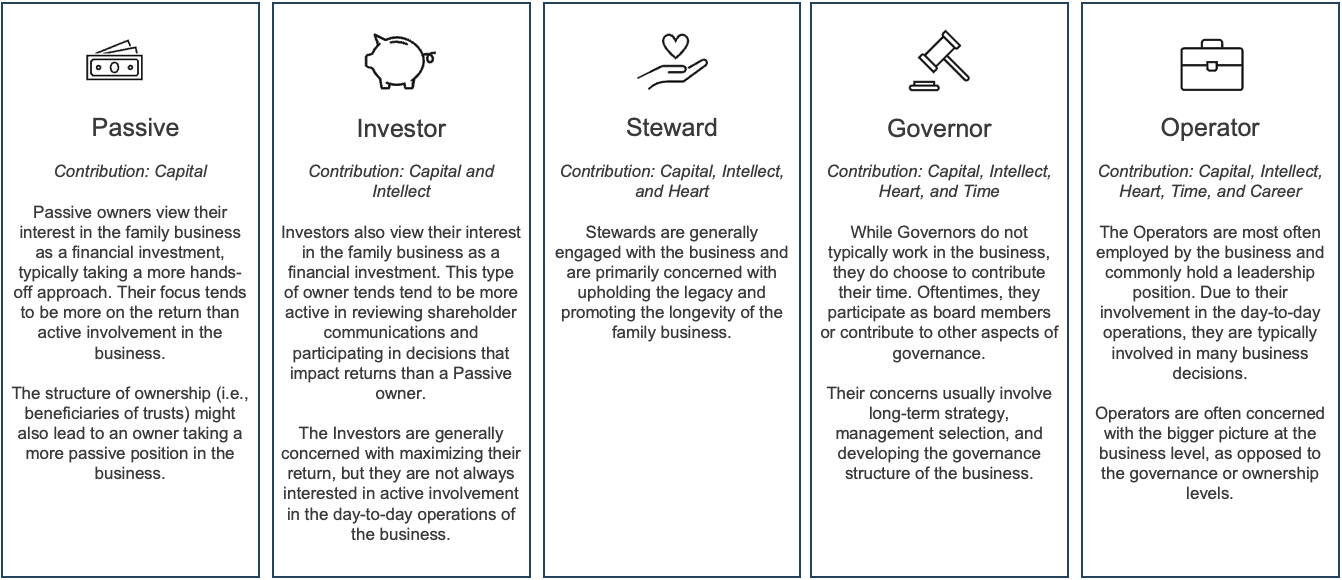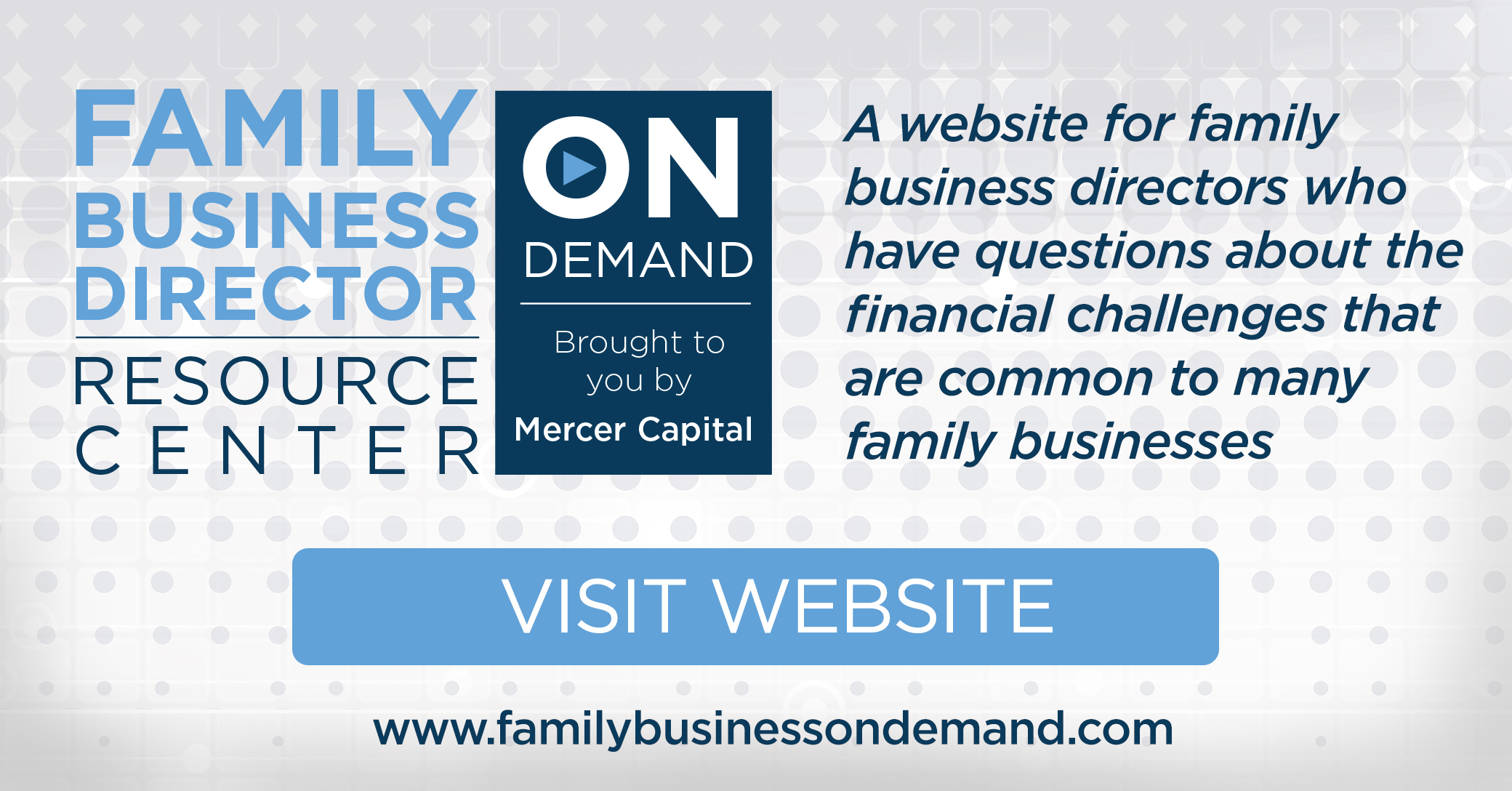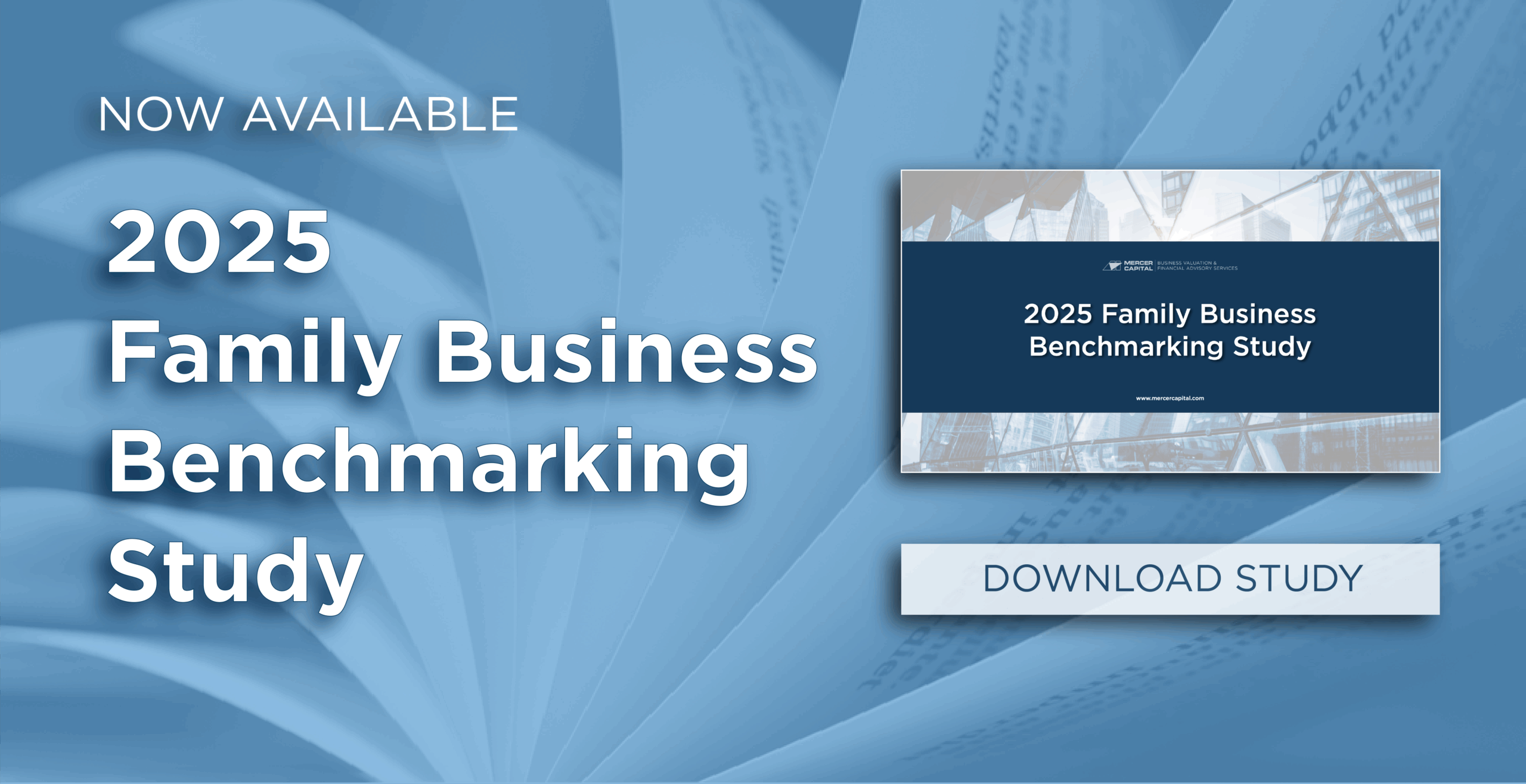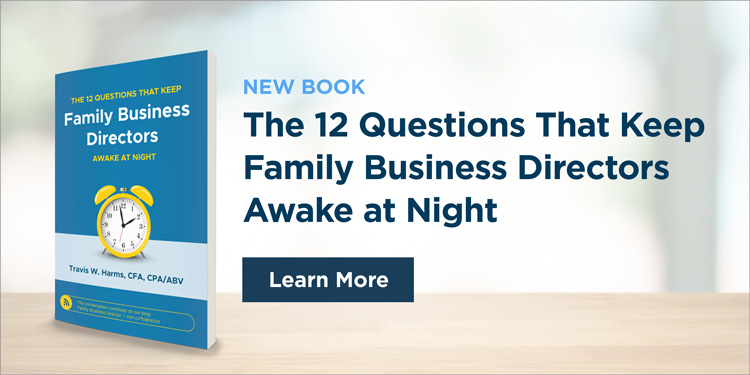Understanding Family Ownership Roles
Family businesses are uniquely positioned to leverage the skills, goals, and offerings of their family owners. Some family owners may have different priorities, like creating a legacy, maximizing their return, or simply building a career. As a family business director, knowing these different goals and the types of owners that make up the family business shareholder group is key. This knowledge will answer the “why?” question as to how decisions are made within the business and how communication with shareholders is handled.
In a Harvard Business Review article entitled “5 Kinds of Ownership Roles in a Family Business,” author Nick Di Loreto describes five types of family business owners based on what they are willing to commit to the business: capital, intellect, heart, time, and career.

Click here to expand the image above
Over time, the role of each family business owner may change. Identifying, engaging with, and communicating expectations to each family owner archetype promotes stability in the family business, especially as the family grows and evolves.
We encourage you to think about the other owners involved in the family business. What do they contribute to the family business? How do they view their contribution to the family business? If these questions elicit different answers, family business directors need to know in order to align them.
Is there a particular owner whose contributions to the family business should be reconsidered? Should a passive owner take on an operator role, or should the family shareholder acting like a steward become more of a governor?
By identifying the different ownership roles in your family business, you can engage and enable the owners who may want to expand their role and contribution. Family business directors can ensure that items like governance structure, shareholder communication, and general day-to-day operational decisions allow each owner to contribute to the family business in their own way.
 Family Business Director
Family Business Director 











